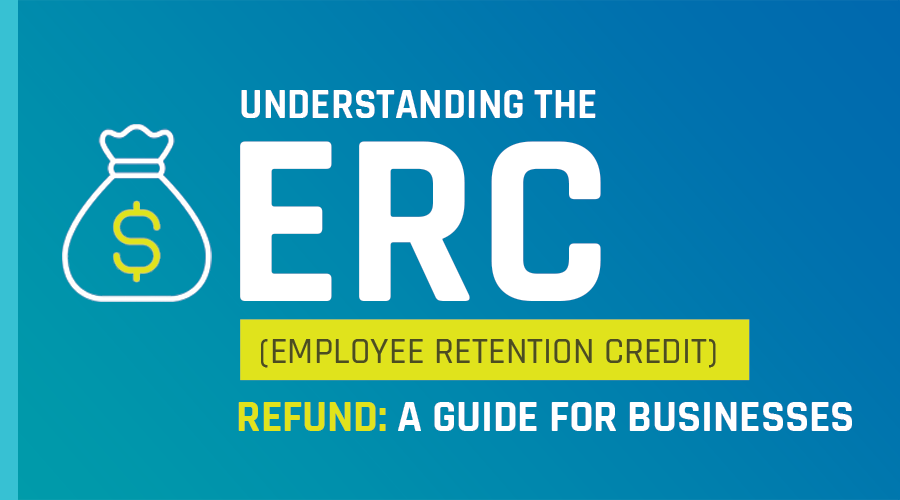Understanding the ERC Refund: A Guide for Businesses

The ERC (Employee Retention Credit) has been a lifeline for many businesses during the
ongoing pandemic.
This refundable tax credit has provided much-needed financial relief to help businesses retain employees and keep their operations running smoothly. However, understanding the ERC refund can be quite complex, especially for small businesses.
In this blog post, we will provide a comprehensive guide on the ERC refund, explaining how it works and how businesses can take advantage of it. What is the ERC? The Employee Retention Credit was introduced as part of the CARES Act in March 2020 to help businesses affected by the pandemic. Initially, the credit was available only to businesses that were fully or partially suspended due to government orders or experienced a significant decline in gross receipts. However, with the passage of the Consolidated Appropriations Act in December 2020, the ERC was expanded and made available to a larger number of businesses.
How does it work? The ERC is a refundable tax credit that businesses can claim on their quarterly payroll tax returns (Form 941). The credit is calculated based on qualified wages paid to eligible employees during a specific time period. The percentage of qualified wages that can be claimed as a credit depends on the period for which the credit is being claimed. For 2020, the ERC can be claimed for qualified wages paid between March 13, 2020, and December 31, 2020. The credit is equal to 50% of qualified wages up to $10,000 per employee for the entire year. So, the maximum credit per employee for 2020 is $5,000. For 2021, the ERC was extended and can be claimed for qualified wages paid between January 1, 2021, and December 31, 2021. The credit percentage increased to 70% of qualified wages up to $10,000 per quarter (or $7,000 per employee per quarter). Who is eligible? To be eligible for the ERC, businesses must satisfy certain criteria. In 2020, eligible businesses were those that either experienced a full or partial suspension of operations due to government orders or had a significant decline in gross receipts (defined as a 50% decline compared to the same quarter in the previous year).
For 2021, the eligibility criteria were expanded, and businesses can now claim the credit if they experienced a significant decline in gross receipts (defined as a 20% decline compared to the same quarter in the previous year) or if they were fully or partially suspended due to government orders. How can businesses claim the ERC refund? To claim the ERC refund, businesses must file Form 941 for the relevant calendar quarters.
The credit can be applied against the employer’s share of Social Security taxes. If the credit exceeds the employer’s share of Social Security taxes, the excess can be refunded to the business.
Businesses can also file Form 7200 to request an advance payment of the ERC if they anticipate that the credit amount will exceed the employer’s share of Social Security taxes for a specific quarter. It’s important for businesses to keep accurate records and documentation to support their ERC claims. This includes records of eligible employee wages and evidence of a decline in gross receipts or suspension of operations.
Conclusion
The ERC refund has been a critical support mechanism for businesses during the pandemic. Understanding the intricacies of this credit can be challenging, but it’s essential for businesses to familiarize themselves with the eligibility criteria, calculation methods, and filing requirements to maximize their benefits. Seeking professional advice from tax experts or consulting with an accountant can also be invaluable in navigating the complexities of the ERC refund.
